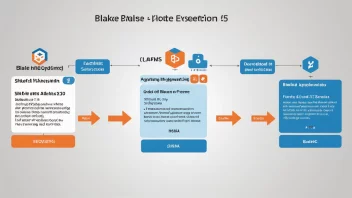Data breaches pose significant threats to organizations, particularly when they originate internally. Understanding how to prevent and respond to these breaches is crucial for maintaining data privacy and security.
Internal data breaches can occur due to various factors, including employee negligence, malicious intent, or inadequate security protocols. Organizations must recognize that even trusted personnel can inadvertently compromise sensitive information.
One of the primary strategies for preventing internal data breaches is to implement robust access controls. This means restricting access to sensitive data based on job roles and responsibilities. By ensuring that employees only have access to the information necessary for their roles, organizations can significantly reduce the risk of data exposure.
Additionally, organizations should invest in regular employee training programs that emphasize the importance of data security. Employees should be educated on the types of threats that exist, the importance of strong passwords, and the protocols for reporting suspicious activities. A well-informed workforce can act as the first line of defense against internal breaches.
Another effective strategy is to utilize encryption for sensitive data. Encrypting data at rest and in transit can protect it even if an employee accesses it without authorization. This ensures that even if data is stolen or leaked, it cannot be easily read or misused.
Monitoring and auditing access to sensitive data is also vital. Organizations should employ tools that log access and modifications to critical information. Regular audits of these logs can help identify unusual access patterns, allowing organizations to respond swiftly to potential breaches.
In terms of response strategies, having a comprehensive incident response plan is crucial. This plan should outline the steps to take in the event of a breach, including how to contain the breach, assess the damage, and notify affected parties. Regular drills should be conducted to ensure all employees are aware of their roles during a data breach incident.
Moreover, organizations should have a clear communication strategy in place. Transparency can help to maintain trust among stakeholders, including employees and customers. Keeping them informed about what happened, how it was handled, and what measures are being taken to prevent future breaches is essential.
In conclusion, preventing internal data breaches requires a multi-faceted approach that includes access controls, employee training, data encryption, and monitoring. Equally important is having a robust response plan to manage breaches effectively when they occur. By prioritizing these strategies, organizations can significantly enhance their data security posture and mitigate the risks associated with internal threats.






